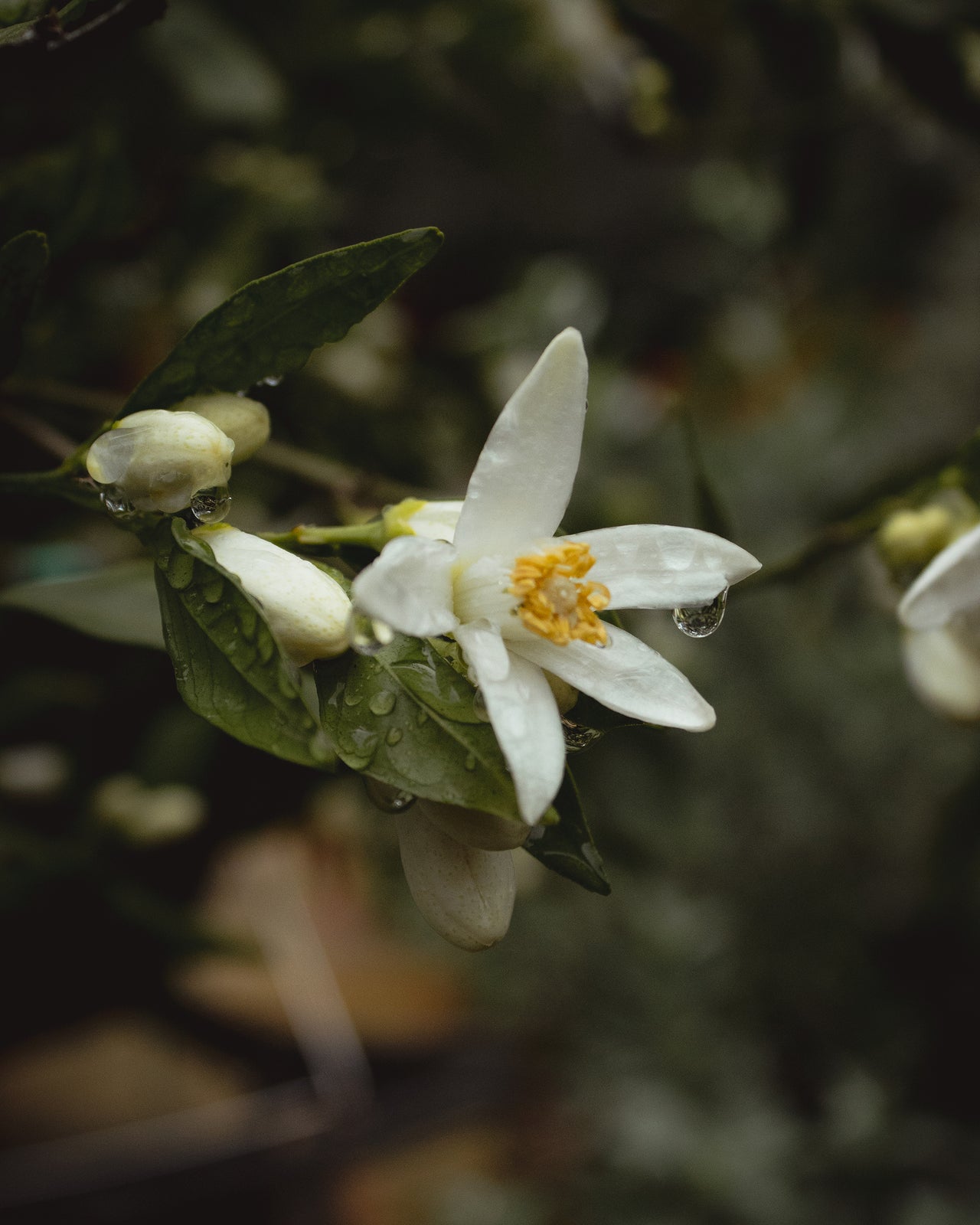Its aroma is sweet and spicy, a symphony of pine and citrus and pepper with lingering notes of eucalyptus and mint. The hydrosol is silky smooth and delicious to boot! The scent of the mist is very similar to the scent of the leaves and the hydrosol itself is highly energetic.
The bay laurel hydrosol is a lymphatic ally on every level. Topically, it can be used to help release lymphatic congestion and aid in detoxification. Bay Laurel hydrosol can also be taken internally, in moderation, as an immune system tonic and digestive aid. The taste is exquisite and just as the leaves are used in savory culinary dishes, the hydrosol can be too! Mist onto soups, salads, pasta and sauces. It makes an excellent flavoring for mocktails and herbal tonics and adds a surprisingly perfect compliment to a sweet dish such as berries and cream or apple pie.
Bay Laurel, Laurus nobillis, is an aromatic evergreen tree or shrub in the flowering plant family Lauraceae. Its leaves are dark green, smooth, about 2-5 inches long, with a single, sharp point at the end. The tree produces small white flowers in the spring which bud into small black or dark brown berries that contain one seed each. Bay laurel is relatively drought tolerant and grows best in full sun. This tree of much renown and lore is native to the Mediterranean region though it is widely grown throughout Europe, North America and Asia. Its leaves have long been used as a culinary spice and it has much symbolic and historical use.
The Latin name, Laurus nobillis, translates as praise and nobility. In Ancient Greece, bay laurel wreaths were a symbol of the highest status. The tree was originally called Daphne, named after the Greek mountain nymph who was a priestess of Gaia, Mother Earth. In the myth, Apollo, a great warrior and the god of music, poetry and art, mocked Eros, the god of love, for his use of arrows in frivolous matchmaking. Apollo was a great archer and accused Eros of wasting the art of archery on love instead of honor. Furious, Eros decides to use his powers of archery on Apollo in revenge for the insulting embarrassment. Eros prepares two arrows, one made of gold imbued with the power of passion and love and the other made of lead, to instill a cold and dark hatred. He takes aim and fires the golden arrow at Apollo. He then fires the second arrow at Daphne.
Daphne, the young river nymph had many wishful suitors, none more enticing or successful than her lust for the forest. She dedicated her life to following Artemis, becoming an “aemula Phoebes” and vowed herself to her eternal virginity.
Upon first sight, Apollo fell madly in love with Daphne and when he tried to seduce her, she called out to Gaia and her father, Landon, the river god for help. Daphne soon realized that Apollo has been struck by cupids arrow and his retreat was hopeless. She pleads to her father for help and he grants her freedom. When Apollo reaches out to touch her, she transforms from a beautiful nymph into a bay laurel tree in his arms. Her limbs become branches, her fingers and hair become the leaves, her feet sink deep into the earth. She is grounded and at home in the forest where she will flourish happily forever.
Apollo weeps for the loss of his true love. The pain is so torturous that he uses his power to render immortality to the tree, Daphne, turning the bay laurel into an evergreen. He promises to honor and remember her forever, “Always my hair will have you, my lyres will have you, my quivers will have you, laurel tree. You will be present for the Latin leaders when a happy voice will sing a triumph and the Capitoline Hill will see long processions.” Apollo fashioned a wreath to wear in remembrance of Daphne and to this day, it is a symbol of great honor and nobility.
Apollo and Daphne (c. 1470-1480) by Antonio del Pollaiuolo. Oil on canvas. National Gallery, UK
In honor of Apollo, a wreath of bay laurels was given as the grand prize at the Pythian Games. The priestess of Apollo, Pythia is said to have ritualistically chewed laurel leaves from the sacred tree growing inside the temple to induce a trance in which she could translate the oracle prophecies. Pythia crowned those who received victorious omens from her prophecies with bay laurel wreaths. It is said she could also read omens from the sacred tree by shaking its branches, listening to its leaves and breathing in its scent.
In Ancient Rome, bay laurel was not permitted to be used as fire wood — “It is very evident that the laurel protests against such usage by crackling as it does in the fire, thus, in a manner, giving expression to its abhorrence of such treatment." Throughout much of Roman culture, laurel was a symbol for victory, championship and honor. The tree was also associated with immortality, ritual purification, prosperity and health.
The tree is one of great significance. At first, it may seem mundane, just a shrub, a bushy tree growing wildly in every direction. But when you look closely at the intricate nature of the leaves, smooth as a matte surface, you start to see something different. Touching its bark, running your fingers along its lengthly, taught branches. Break open a leaf and inhale the sweet and spicy medicine of the bay laurel. I am transported to a place of home and hearth, a sweet and spicy scent of community and warmth.
SHOP BAY LAUREL HYDROSOL














